23 Oct 2021 - {{hitsCtrl.values.hits}}

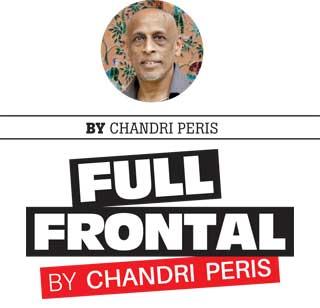 Somewhere, along life’s long journey, some of us have the privilege of meeting a few extraordinary people who make a distinct impression on us. Reminiscing, about these close friends, always makes me smile. The invaluable advice that they gave provides guidance to me even today. Whenever, I remember them, I often say a silent thank you to these dear departed friends, whilst wishing that they were still around.
Somewhere, along life’s long journey, some of us have the privilege of meeting a few extraordinary people who make a distinct impression on us. Reminiscing, about these close friends, always makes me smile. The invaluable advice that they gave provides guidance to me even today. Whenever, I remember them, I often say a silent thank you to these dear departed friends, whilst wishing that they were still around.
It was in April 1976 that I first met Graham Hatch. Graham and his then wife, Michele Leembruggen, came to help us out after what had been a disastrous performance at the semi-finals of the Shakespeare Drama Competition. I had performed so badly that we (the Thomian’s) very nearly missed getting into the finals! A whole band of Thomian’s of a generation before ours (wives and partners included) had come to offer help and restore the honour of our alma mater. I well remember, Michelle sitting me down in the front row of the Lionel Wendt theatre and telling me, “women don’t eat their hair!” This was because I’d done just that whilst playing Desdemona in an excerpt of Othello. Graham was using his artistic talents to recreate the set from what previously looked like a madam’s boudoir, to an elegant and tastefully lavish bedroom, where the final scene of Othello was played out. The final result of this competition changed the rules of Inter-School Shakespeare Drama Competitions forever. But that’s another story.
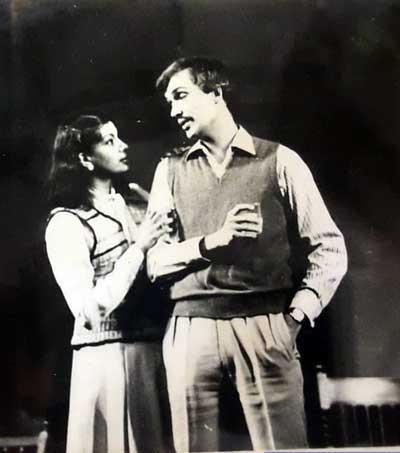
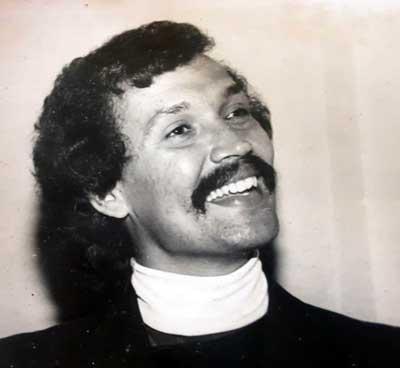
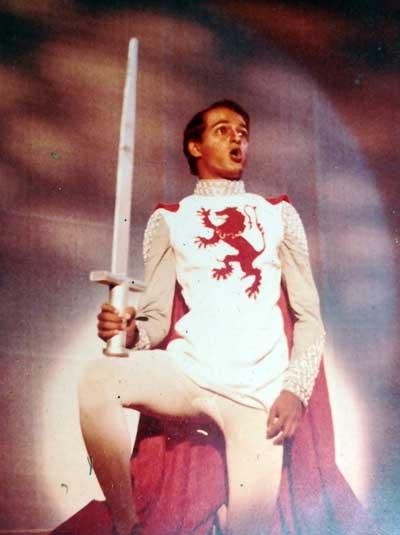 Soon after winning this competition, the St Thomas’s College Drama Society decided to embark on a production of Oscar Wilde’s “An Ideal Husband.” It was then that Graham became a close friend to a lot of us. The late Richard de Zoysa and I, began moving around with Graham mostly because he designed the costumes for this production. Anyone who reads this must remember that we were a group of untethered teenagers wanting desperately to get on stage and perform, and on this occasion, we were all playing female roles (hooped underskirts, stuffed braziers, ornate wigs and high-heels worn alongside the much-required jockstraps!) Graham designed some of the most sumptuous gowns anyone had ever seen on the stage for this production. It was on the many trips to shops in Pettah (to buy the fabrics), the endless fit-on’s (at Nanda Wijesekere’s), that our very long-lasting friendships began. The key ingredient to these relationships was the ability to laugh at anything, everything and everyone, including ourselves! We were each other’s sharpest critics! Graham had a rapier sharp wit, which we all absolutely loved and learnt from. Very often we were at the receiving end of his jokes, and it was because of him that we learnt to give as good as we got.
Soon after winning this competition, the St Thomas’s College Drama Society decided to embark on a production of Oscar Wilde’s “An Ideal Husband.” It was then that Graham became a close friend to a lot of us. The late Richard de Zoysa and I, began moving around with Graham mostly because he designed the costumes for this production. Anyone who reads this must remember that we were a group of untethered teenagers wanting desperately to get on stage and perform, and on this occasion, we were all playing female roles (hooped underskirts, stuffed braziers, ornate wigs and high-heels worn alongside the much-required jockstraps!) Graham designed some of the most sumptuous gowns anyone had ever seen on the stage for this production. It was on the many trips to shops in Pettah (to buy the fabrics), the endless fit-on’s (at Nanda Wijesekere’s), that our very long-lasting friendships began. The key ingredient to these relationships was the ability to laugh at anything, everything and everyone, including ourselves! We were each other’s sharpest critics! Graham had a rapier sharp wit, which we all absolutely loved and learnt from. Very often we were at the receiving end of his jokes, and it was because of him that we learnt to give as good as we got.
Besides his wit, he was a man of great insight and creativity. His contribution to costume design in Sri Lanka was unparalleled. Throughout his career as a Designer for the theatre he created costumes for The Matchmaker, Camelot, Evita, Aladdin, Manik Sandrasagara’s production of My Fair Lady, Tony Ranasinghe’s Sinhalese version of Shakespeare’s Julius Caesar, The Owl and the Pussycat, Private Lives, Song and Dance, Cats, Marco Millions, The Lion in Winter, Mother Courage, Charlie’s Aunt, See How They Run, The Death Trap, An Evening of Chekhov, The Seagull, Contemporary Dance Theatre and many more. Amongst the most memorable of his designs were some classic outfits that could compare with anything we would expect to come out of Hollywood. The outfit worn by Anne Bultjens as Dolly Levi in The Matchmaker, the evening dress worn by Christine Thambimuttu in Private Lives, the entire wardrobe created for Michelle Leembruggen for Evita, the fantastical costumes created by knotting sari’s together for the two Genie’s in Aladdin, and the entire selection of gowns made for Christine for My Fair Lady, and all the outfits for the Ascot scene (which he created in autumn shades) were quite unforgettable.
From designing costumes, he moved on to creating costumes for dance, and then on to the world of fashion, where he worked with Chrysanthi Fernandopulle, Pugoda Fabrics, Ramani Fernando and many others. He went on to producing several fashion shows and worked and advised on quite a few beauty pageants. However, this was always secondary in comparison to his desire to work for the theatre. Graham (like most of us), was involved in theatre because of his love for it. He along with all of us gave our time, our energy and the little money we had and expected no payback, whatsoever, for the work we did for the theatre. During this period, the fashion and beauty industry in Sri Lanka was beginning to attract huge financial backing. The sponsorships and funding these industries attracted completely dwarfed the backing that the theatre received. This was what swayed most of us (including Graham) to move into this highly competitive arena.
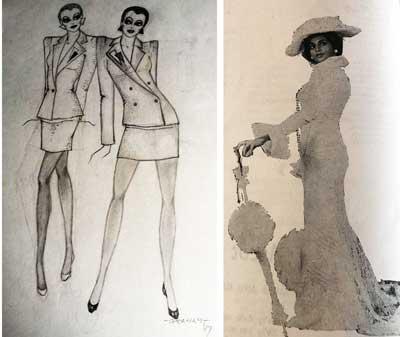 At the time when English theatre was at its productive best, our clique met at the Lionel Wendt’s Art Centre Club frequently. This club was the watering hole of the creative elite in Sri Lanka and was especially, popular with actors and actresses of both the Sinhala and English theatre and cinema. It was to this place that someone would bring along a script that they had come across at the British Council or at the USIS and earnestly say, “let’s do this!” If anyone felt that a play was suitable for our audience, it was cast, sponsorship was found and then it was a period of rehearsals and a production was on the boards soon after. On average, at least ten to twelve plays were done by this group every year. When the club closed at 11:00pm in the evening, most of us walked from the Lionel Wendt along Bagatelle Road on to the Galle Road and then on to Visaka Road or to Joseph Lane (where Graham and Michelle lived) and sit on the wall outside and chat about theatre till the early hours. Trishaws weren’t an option those days. These nocturnal meetings happened even after they moved to Rudra Mawatha. The seeds of many stage productions were sown at these meetings. Some materialised and some didn’t.
At the time when English theatre was at its productive best, our clique met at the Lionel Wendt’s Art Centre Club frequently. This club was the watering hole of the creative elite in Sri Lanka and was especially, popular with actors and actresses of both the Sinhala and English theatre and cinema. It was to this place that someone would bring along a script that they had come across at the British Council or at the USIS and earnestly say, “let’s do this!” If anyone felt that a play was suitable for our audience, it was cast, sponsorship was found and then it was a period of rehearsals and a production was on the boards soon after. On average, at least ten to twelve plays were done by this group every year. When the club closed at 11:00pm in the evening, most of us walked from the Lionel Wendt along Bagatelle Road on to the Galle Road and then on to Visaka Road or to Joseph Lane (where Graham and Michelle lived) and sit on the wall outside and chat about theatre till the early hours. Trishaws weren’t an option those days. These nocturnal meetings happened even after they moved to Rudra Mawatha. The seeds of many stage productions were sown at these meetings. Some materialised and some didn’t.
This core group of creative individuals which consisted mostly of Thomian’s soon expanded. Richard decided to work with a group of talented Josephian’s who began to provide palpable competition to the Thomian’s at the Shakespeare competitions. A whole host of Peterite’s who were in the original cast of Jerome de Silva’s production of Cats also began to mix with us making the theatre family very large and productive. The female parts were most often played by girls from Bishops College, Holy Family Convent, St Bridget’s Convent and Ladies College, Colombo. The casts of Evita, Song and Dance, Camelot, West Side Story, My Fair Lady and The Fantasticks (Directed respectively by Graham Hatch, Indira Gunesekara, Richard de Zoysa, Steve de la Zilwa, Manik Sandrasagara, Jerome de Silva and I) consisted of casts that incorporated actors from all the major schools in Colombo.
Graham was always at hand, to give us advice on costumes and sets during that many of the shows we participated in. He even designed most of the posters and programme covers for them. However, there were huge divisions within this group that sometimes tore it apart. Even though some of the rivalries may seem quite petit in hindsight, it was Graham’s practical guidance that helped quite a lot of us through those times.
Shortly, after the production of Evita, a rumour was spread that Graham had been to see the London production of the show five times before reproducing the show in Colombo. I know full well that he spent five days in London on his way back from Canada, where he had been on a Commonwealth Scholarship. Within this short period, he managed to see six West End shows. He didn’t even bother to quell the rumour but simply said, “if I managed to see six different shows in five days, they should redo their maths!” Even today, every theatre in the UK only has the rights to do six evening performances and two matinees a week.
On another occasion, Richard de Zoysa had started coaching the Josephian’s for the Shakespeare competition causing widespread fury among the Thomian’s, who until then had not faced any worthy competition for years. I remember him telling me, “damn good, you all will just have to be better than them, won’t you?” Graham had been asked to design the costumes for both the Thomian and Josephian entries, to which he had agreed. This fanned the flames of rivalry to fever pitch igniting lifelong hatreds. We (the Thomian’s) did rise to that challenge and won again. I must admit that the competition was tough that year.
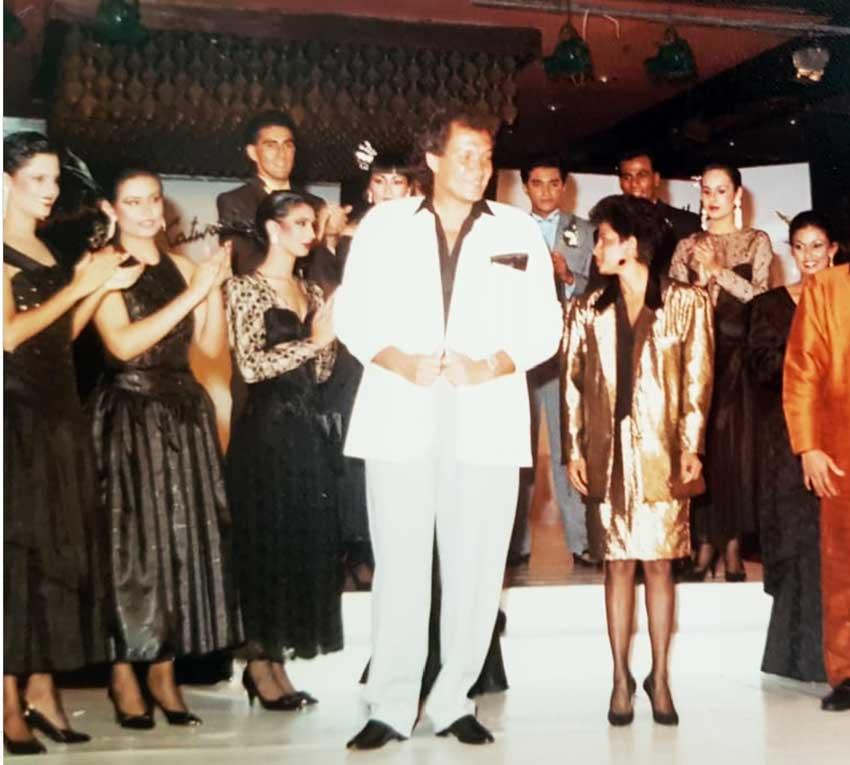
It was through his criticism that one really began to know Graham well. None of his advice was given with malice, but with the sincere intention of improving whatever we were doing, be it acting, directing, designing, dancing or modelling. Writing about Graham would not be complete without mentioning a few others who were very dear to him. He was passionately fond of his only daughter Pia. To say that his world revolved around her would be an understatement. Gerard Raymond (one of the few Royalist’ in our clique) was theatre mad and knew about everything that was happening in the world of cinema and theatre. It was through his connections to Ceylon Theatres that all of us started benefitting from great sponsorships. Although, he was never mentioned in any programmes or articles, he was a key contributor to the theatre scene in Colombo. He remained a very close friend of Graham’s all along. Willy Pinto was another good friend, this generous and extremely witty man used to drive us all over in his yellow Mitsubishi Lancer (Willy’s car was christened the “a***hole” because everyone had one; a Mitsubishi Lancer, I meant!!). He spent a great deal of time with Graham and all of us, discussing films which was his passion. When the two of them were together, their humour was utterly devastating. None of us will ever forget piling into his car to be dropped off at our respective homes, while listening to the strains of Barbara Streisand’s “Guilty” and Diana Ross’s “Endless Love” playing on the car’s stereo. All through the difficult times when Graham’s health was failing, Willy kept a close eye on his great chum.

Graham had a very special gift for sketching. When he was diagnosed with Parkinson’s, the loss of control in his hand was something that saddened him the most. It is only if someone has the time and ability to put together a retrospective of his sketches and photographs of the many costumes and fashion garments that he created, that we will realise what a great Artist and Designer, we have lost. I left Sri Lanka in 1979, to study Choreography and Dance at the Laban Centre in London. Whenever, I returned to Sri Lanka during and after my studies, I did my best to present a few pieces of choreography with dancers in Colombo. Most of these shows were pulled together in a short period of time (two-weeks) with dancers from various diverse traditions and backgrounds. During these shows, I always sought Graham’s opinion, which I valued above anyone else’s. The last time I met Graham was after one of my shows at the Lionel Wendt. He sat opposite me in one of the dressing rooms and said, “you have found your voice as a choreographer, its time you came back and worked here.” I remain hesitant about returning to Sri Lanka, but still ponder about doing so someday. The glorious county I left is not what it was anymore. There is a void created by great friends who have gone too soon. Those were indeed the best days of our lives.
07 Jan 2025 4 hours ago
07 Jan 2025 4 hours ago
07 Jan 2025 5 hours ago
07 Jan 2025 7 hours ago
07 Jan 2025 7 hours ago